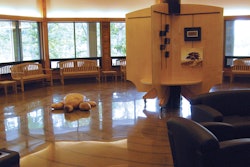By Alyse Liebowitz | 3 Chicks That Click Photography
www.3chicksthatclick.com
Whether you're selling a product or selling a service, you are the face of your business. You and your product have to look their best. Small business owners often feel their advertising budget can't include professional photography, but it can't afford NOT to. It should be one of the first items in the budget. In this challenging economy, many small business owners are looking for a "do it yourself" solution. Here are some tips from a professional photographer to get the best images on a scaled back budget.
It's critical for small businesses to project an image of success and professionalism. Nothing says "unprofessional" or "we're on a shoestring budget" than photographing your product or yourself with a camera phone, digital point 'n shoot, or (the worst) a web cam.
To project success and entice customers, your product needs to look topnotch. Think about where the images will appear. Are you putting the images in hundreds of brochures, on your web site, on your business cards, in your marketing materials? It's difficult to project professionalism and high quality in your products when your images are clearly amateur, and show no effort to present them in their best light — literally.
Poorly lighted images are the most common issue in business marketing materials. How many times have you seen dark, heavily shadowed, even blurry images? Overly pixilated images? Your product may look fabulous in your store or showroom, but your customers are not always standing in your store. You need to get them there. If you need to find budget dollars to afford professional photography, consider areas you can cut back on that aren't visual, things your customers won't notice.
When photographing your product outdoors, take advantage of the best lighting of the day — early morning and late afternoon. Avoid the harsh midday sun, as well as shooting into the sun. Position your product so that the sun is behind you when you shoot. If the product is something that can't be moved, such as a concrete patio or paver stones, you may need to add fill flash if there are any shadows covering the area. Point and shoot cameras usually have a setting for fill flash.
Use unobtrusive props, such as items that will enhance the product. For flat concrete pavers or patios, simple potted plants nearby will add a little pop of color without looking too busy. Perhaps add a simple wooden bench or classic style patio chair that shares the style of the product. Be aware of what else is in the frame when composing the shot — even a gum wrapper on the ground will be noticed in a photo. Remember to leave enough room around the subject for future cropping. You can always crop in closer, but you can't crop out if you haven't left any space.
Digital images for print purposes need to be full resolution, usually 300 dpi. In digital cameras, use the highest quality jpg setting possible. You may not have enough space on the memory card for a large number of photos, but you can simply download the images from the card when it's full and continue shooting, or buy extra memory cards. Don't try to save space by reducing the image size/quality.
The size of the printed image should determine the amount of megapixels of the camera you choose. A 5 or 6 megapixel camera will produce a decent quality 8x10. Unless your final image needs to be larger than that, there isn’t any need to go with a higher megapixel camera if your budget can’t afford one. Right now, most consumer point and shoot cameras are 8 to 10 megapixels, which can generally produce a 16x20 poster. Not the most common format for magazine advertising!
Megapixels aren't responsible for sharpness or lack of it. That has to do with the quality of the lens/camera and the ability of the photographer. If the ISO (sensitivity) of the camera is set too low for the lighting conditions, you may get image blur without a tripod. Be sure to use the appropriate ISO for the conditions you're shooting in. A higher ISO, i.e., more sensitive setting, will prevent most blurring, as well as the use of flash when required.
Not everyone pays attention to a good photo, but nearly everyone will notice a bad one. A good quality photo makes customers look at your product, not at the pixilated, shadowy, out of focus image. The best product can look like the worst product with poor photography. Conversely, even a mediocre product can look like a million bucks with professional photography.
And if YOU are the product, if your business is a service YOU provide, then a professional photo of yourself is extremely important. Again, you must project success and professionalism. Your images should clearly show that you provide a high quality product — yourself.
Paying for quality is something you won't regret.
Alyse Liebowitz is the owner of 3 Chicks That Click Photography in Holmdel, New Jersey. She is an accomplished photographer specializing in wedding photography, but also photographs many other subjects including corporate events and portraits, retail grand openings, and community events. Corporate clients include the American Cancer Society, Office Depot, the IEEE, Heritage House Sotheby's International Realty, The Wenroth Group, and many others. Although 3 Chicks primarily focuses on the Northeast United States, they are mobile photographers and will travel anywhere for an assignment. For more information, visit www.3chicksthatclick.com

















